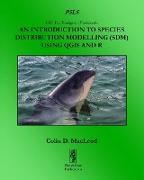An Introduction To Species Distribution Modelling (SDM) Using QGIS And R
BücherAngebote / Angebote:
This workbook is a companion volume to GIS For Biologists: A Practical Introduction For Undergraduates. It is designed to augment the information on using GIS in biological research provided in that book, as a result, it assumes that the reader already as some level of familiarity with GIS. In addition, it has been specially written based around free-to-access, open source software. Specifically, it uses two such packages, QGIS for the GIS-based components, and R for statistical analyses. Working with both of these packages, rather than just one or other, allows you to make the most of the specialist tools available within each of them.It contains five exercises which will introduce you to the basic spatial processing and analytical techniques required to create a biologically meaningful species distribution model (SDM). Taken together, these exercises allow you to work through an example of an SDM from processing your survey data and making raster data layers of environmental variables to constructing an SDM, visualising its predicted spatial distribution and validating its predictive ability. The exercises are designed to be followed in the order they are presented, and work with a specific data set which can be downloaded from an accompanying webpage.Working through these five exercises will help the user obtain experience in creating SDM using QGIS and R, and provide them with the confidence to apply these skills to their own research. These exercises are presented in the same easy-to-follow flow diagram-based format used in GIS For Biologists: A Practical Introduction For Undergraduates. They are accompanied by images which show the user how their GIS project should look as they progress through the exercises, allowing them to compare their own work to the expected results.The PSLS series of books uses Task-Oriented Learning (TOL) to teach the practical application of research skills to the life sciences. This involves demonstrating how these skills can be used in the specific circumstances in which they are likely to be required rather than concentrating on teaching theoretical frameworks or on teaching skills in a generic or abstract manner. By seeing how the similar processes are used to achieve a variety of different goals within a specific field, it becomes easier for the reader to identify the general rules behind the practical application of these processes and, therefore, to transfer them to novel situations they may encounter in the future.
Folgt in ca. 10 Arbeitstagen
